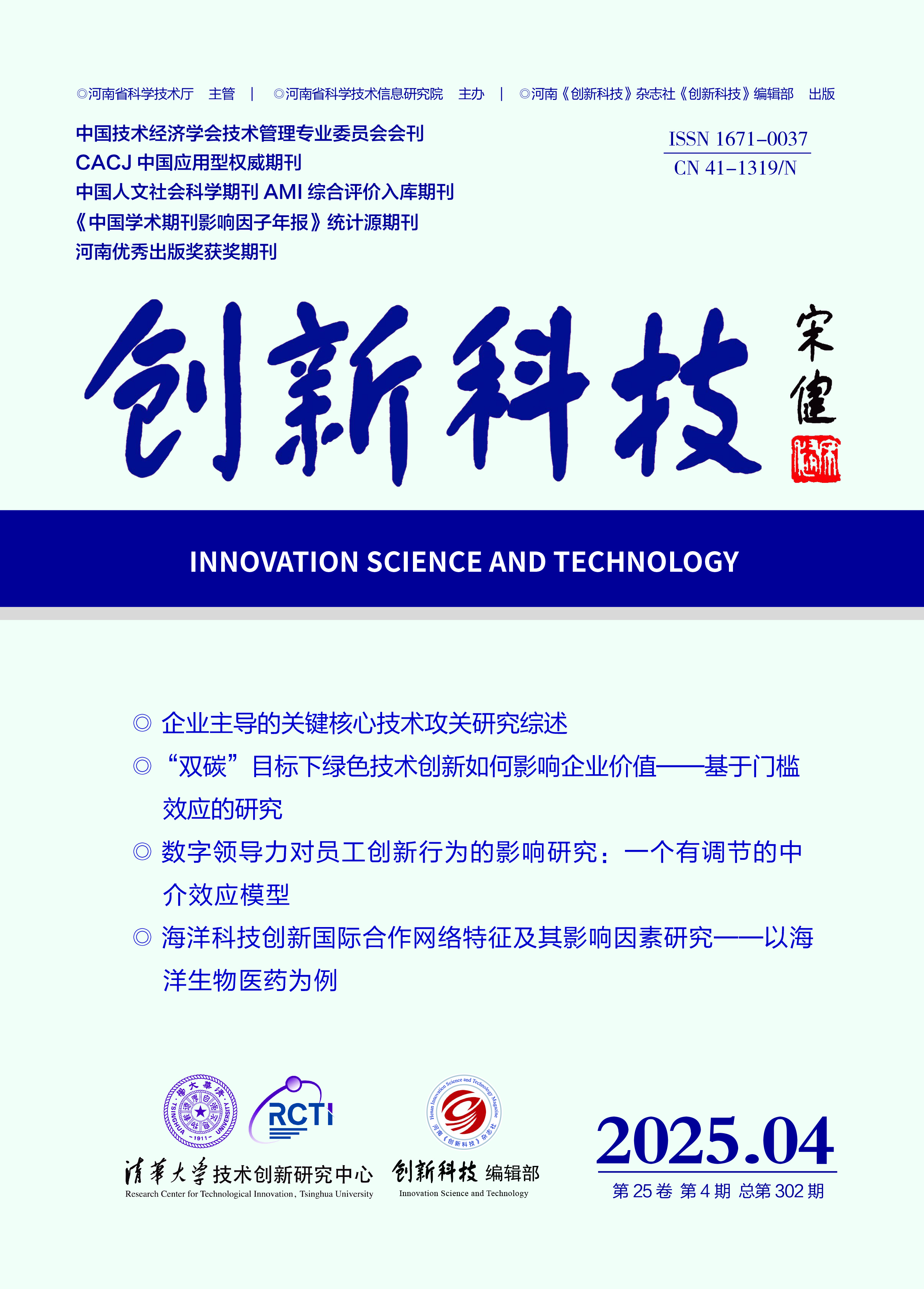INNOVATION SCIENCE AND TECHNOLOGY
Quick Search

All publication are peer-review
Peer review will take the from of double-blind review Judge objectively and impartially
There is no conflict of interest for the reviewer
Review articles shall be kept strictly confidential prior to publication
Theories and Methods of Science of Science
Research on the Construction of Assessment and Calculation Methods for the Market Size of Future Industries
Chen Jin1, 2 , Zhang Keren1, 2 , Zhu Ziqin1, 2 , Song Qi3
(1.School of Economics and Management, Tsinghua University, Beijing 100084, China; 2.Research Center for Technological Innovation, Tsinghua University, Beijing 100084, China; 3.Peking University Science Park, Bei‐ jing 100080, China)
Abstract: Future industries serve as the core carrier for national new quality productivity de‐ velopment, and it is also the high ground for enterprises to secure sustained competitive advan‐ tages. Effectively assessing and measuring the market size of these industries can provide a sci‐ entific basis for industrial and technological decisions and is an important support for optimizing resource allocation and risk management. Although there are already various methods for assessing and measuring the scale of indus‐ tries, these methods have certain limitations for the highly uncertain emerging field of future in‐dustries. In addition, future industries are characterized by multiple types and pathways. Tradi‐ tional assessment and measurement methods often focus on a single technology or industry, mak‐ ing it difficult to conduct a systematic analysis of the coupling relationship and cross-impact be‐ tween different technologies and industry types. This is especially true in cases where different algorithms and models can lead to significant differences in assessment results. Consequently, it is urgent to conduct in-depth research on how to select appropriate algorithms and models for different "technology-industry coupling configurations", as well as how to validate and optimize these models. In response to this, the study constructed a 3×3 matrix for future industry assessment and measurement from two dimensions: technology type (including substitution type, disruptive type, and transformation and upgrading type) and industry type (comprised of consumption type, export-oriented type, and intermediate input type). The proposed assessment and measurement indicators were categorized into nine groups, leading to a systematic approach for assessing and measuring the market size of future industries. Meanwhile, the study conducted a cross-coupling analysis between technology types and industry types, elucidating the differentiated development patterns associated with various "technology industry coupling configurations". For each type of configuration, assessment and calculation indicators and formulas have been adapted, including changes in market size, the export competitiveness index, the substitution penetration rate, in‐ dustry scale prediction, export premiums, the industry chain reconstruction index, the consump‐ tion demand growth rate, the export competitiveness improvement index, and the production effi‐ ciency improvement index. These indicators comprehensively cover multiple key dimensions such as changes in market demand, technological maturity, cost-effectiveness, changes in indus‐ trial chain structure, improvement of export competitiveness, and profit growth. By moving be‐ yond the traditional single-dimensional assessment paradigm, they provide valuable guidance for a more comprehensive and quantitative assessment of the market potential, strategic value, and policy adaptability associated with different "technology-industry coupling configurations". These tools can provide data support and decision-making reference for governments at all lev‐ els, enabling them to formulate tailored technology and industrial policies based on local condi‐ tions. Additionally, they serve as optional tools for future industrial innovation cultivation enti‐ ties represented by enterprises to optimize development strategies and scientifically control risks. Due to space limitations and other factors, the study only proposed a conceptual framework for the assessment and calculation method for the market size of future industries, rather than a fully developed plan. In the future, the rationality of this conceptual framework will be further verified in specific future industry contexts. Additionally, research will focus on developing dy‐ namic assessment methods for estimating future industrial market size to enhance the adaptabil‐ ity, synergy, and sustainability of the method.
Key words: new quality productivity; future industries; market size; strategic management; as‐ sessment and calculation